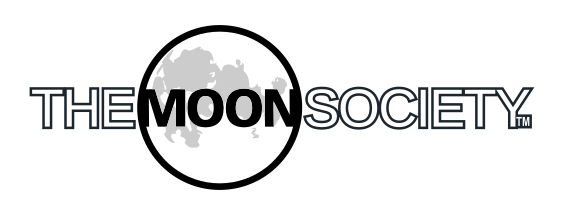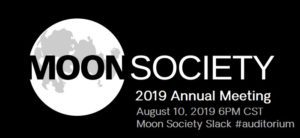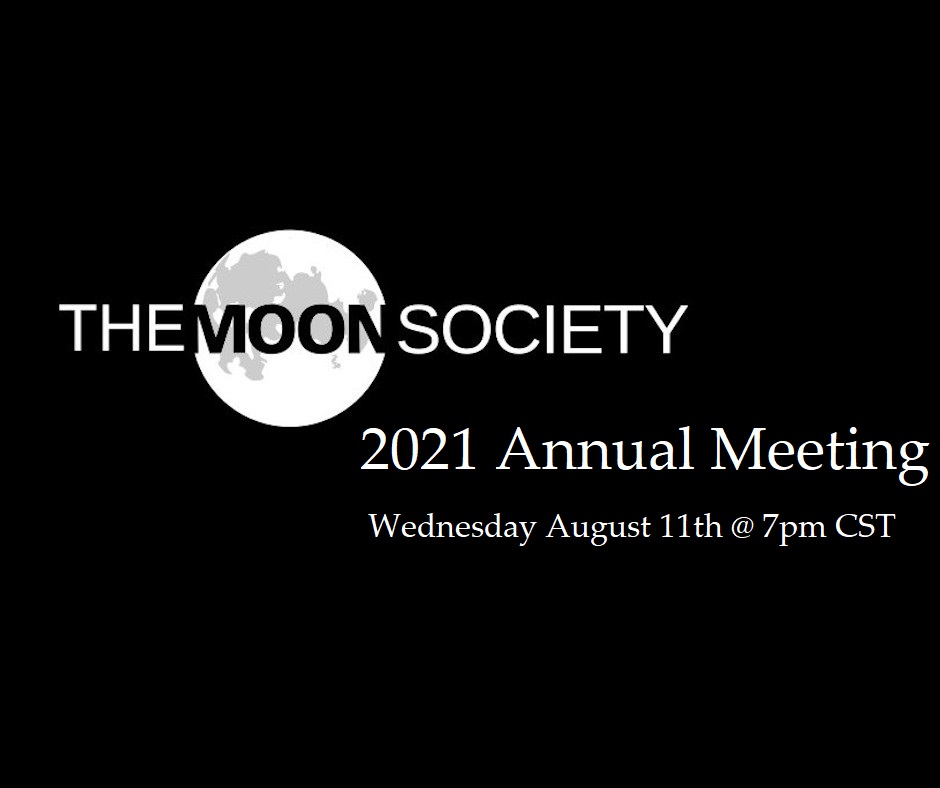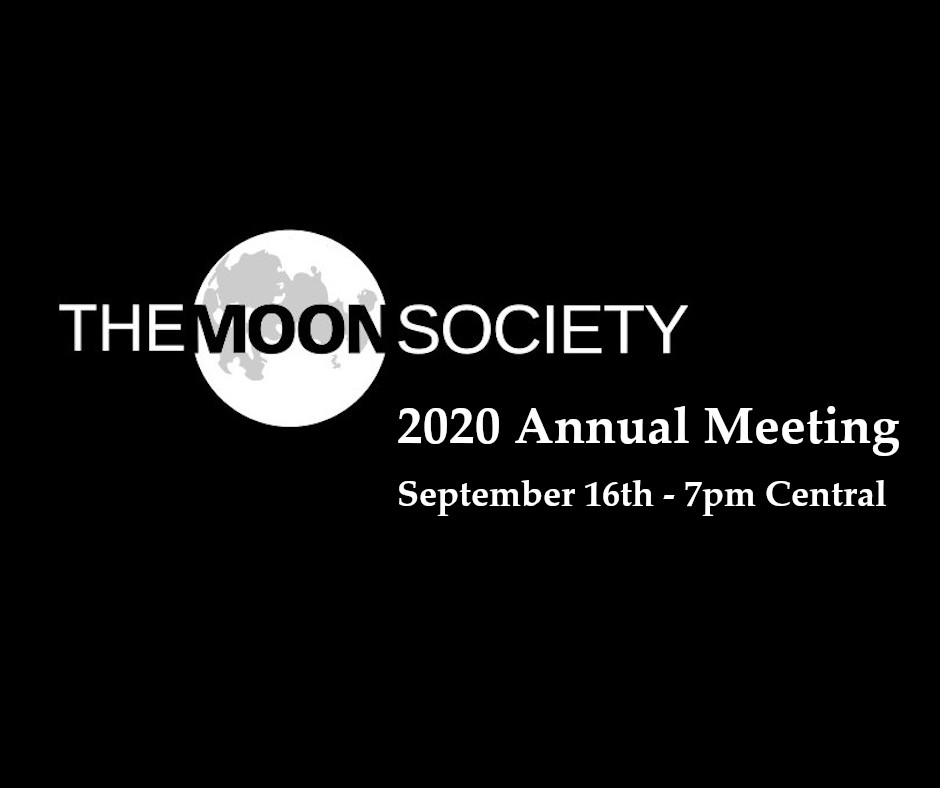The Moon Society held it’s 2019 Annual Meeting on August 14, 2019. The meeting was held online in the Society’s Slack workspace in the #auditorium channel at 7pm Central time. The Moon Society President, Michael Mealling, presented the “State of the Society” address. Keith Garrett. the Society’s Secretary, then presented the election and survey results. The meeting concluded with a discussion regarding what the Society can and should be doing going forward.
President’s “State of the Society” Address
Where I, as President, and the Board are challenged is understanding what our members are looking for from the Society and how the Society can engage more with Lunar related efforts around the world. I’ll have more to say on this question below.
As of 08/14/19, Society membership stood at 84 members in good standing, which is down slightly. The Society has funds available in the amount of $36,000 (+/- some small number once we get a most recent statement).
One of last year’s big projects was finally getting our website design implemented. The#team-web group is actively discussing getting that done within the week. Our biggest challenge is generating new and useful content so we are asking our members to help us source Lunar related material and commentary.
One source of content that the team produced recently was the 50th Anniversary of Apollo 11 version of the Moon Miners’ Manifesto published in July with the special help of James Gholston, Rose Dieteman, Lauren (what is your last name?), Peter Kokh, and James Burk.
Also, as a reminder, the founder of the Manifesto, Peter Kokh, has published an update and archive of many of the reports in the Manifesto in a new book titled “A Pioneer’s Guide to Living on the Moon”. The book is downloadable via Amazon:https://amzn.to/2uALjK6 (With the SIGNIFICANT help from James Burk).
One of the more impactful developments over the past year has been the Society’s support of the Alliance For Space Development. The Society continues working with the Alliance to educate the US Congress and the Executive Branch on all things Moon. In 2019 we participated in March Storm by visiting several House and Senate offices. Our main focus was the Space Development and Settlement Act of 2019 which has experienced an on and off again adoption in various bills. Within the context of the Alliance, the Society has been educating Congress on Lunar related opportunities such as water resources, space based solar power,and manufacturing/sourcing of raw manufacturing materials from lunar regoliths. We are pushing for 2020’s Alliance focus to be on a ‘strategic space water reserve’ concept to act as a seed level support for lunar development.
It is also time for the Alliance’s 2019 Fall Fury Home District Congressional Visits. Members can sign up here:https://docs.google.com/forms/d/e/1FAIpQLSfFAXLJXH5zJGmjVv1XbJFhyD9xEwhz46_o89YEieH4qe7tdw/viewform
Beyond the Society the Moon has continued to gain mindshare as an actual destination we can reach within our lifetimes and within budgets that we can afford. This year also marked the 50th anniversary of the Apollo 11 landing which was widely celebrated with proclamations, postage stamps, documentaries, parties, books, events, and even a holiday (https://spaceexplorationday.space/2018/07/21/jointresolution/
while most were looking back nostalgically, many were looking forward to what can be done next. While the Whitehouse’s pivot toward the Moon continued to face some political headwinds, other programs such as Commercial Lunar Payload Services (CLPS) made progress by awarding three contracts to commercial lunar landers (one company has since backed out). While not a CLPS company, Blue Moon (Blue Origin’s Lunar division) unveiled a multi-ton Lunar lander this year and is positioning it as a faster, cheaper alternative to NASA’s plan of record.
One of the more impactful developments of the past year was the landing of China’s Chang’e 4 (嫦娥四号) lander/rover combination on the Lunar farside. In order to maintain communications with the lander the mission included the Quèqiáo (鹊桥 or ‘Magpie Bridge’) smallsat communications relay in a halo orbit around the Earth/Moon L2 point. China intends on Quèqiáo to remain operational for multiple missions, becoming the first Lunar specific communications infrastructure. (This development has spurred many in the US Government to action, although budgets still seem to be limited)
The most recent mission was SpaceIL’s Beresheet lander which was built by a non-profit consortium of private companies and individuals from Israel. SpaceIL was one of the Google Lunar XPrize competitors before the prize was cancelled. Given SpaceIL’s progress the XPRIZE Foundation awarded SpaceIL $1 million as a “you made it farther than anyone” consolation prize. Sadly the lander was lost due to a software glitch during landing. The team has vowed to try again, although they may not try for a lunar landing again.
Well, not most recent since Chandrayaan 2 launched a few weeks ago and is now on its way to the Moon.
Now, on to my thoughts on what role the Society can play in all of the above…
The continuing conversation within the Society’s leadership is what can the Society do for its members and for the larger effort of developing and settling the Moon. In many of my conversations around the industry there are three themes that keep coming up:
Our role as advocates
Both the Mars Society and the Planetary Society routinely advocate for their projects directly with the United States Congress and with other space agencies around the world. There is currently no advocate for Lunar development except for the Moon Society. My goal for the coming year is to have Moon Society members regularly engaging with their elected officials and even non-Governmental organizations. There is some concern about the boundary between advocacy and lobbying but the IRS and other space advocacy organizations have significant experience here and the guidance is fairly clear.
Our role as customers
The Moon Society is fairly unique in its position on commercial development of the Moon. As such it can be possible for the Society members to act as customers, either individually or acting through the Society, for various Lunar related companies.
and finally,
Our role as educators
Most people alive now were not around when Apollo 11 landed on the Moon. For them it approaches legend rather than history. Much of NASA’s educational material is Mars and deep space focused. There is a need from educators for Lunar specific educational materials as well as more digestible material for the layperson. I suggest that the Society take on the task of providing material, resources, and experts to those who only recently have thought of the Moon as some place to explore, settle, and develop.
It is that last one that I get the most requests for when I am ‘out and about’.
That concludes my prepared remarks for the President’s Report. I would like to handle any questions quickly so we can pivot to the elections report, after which we can dive into any deeper discussions.
Election and Survey Results
See Election and Survey Results 2019 for more information.
The 2019 Moon Society Annual Meeting can be viewed at our Slack workspace in the #auditorium channel.
- You can use your browser to access the workspace
- Or you can download the Slack app. This is the more efficient option for long-term use.




